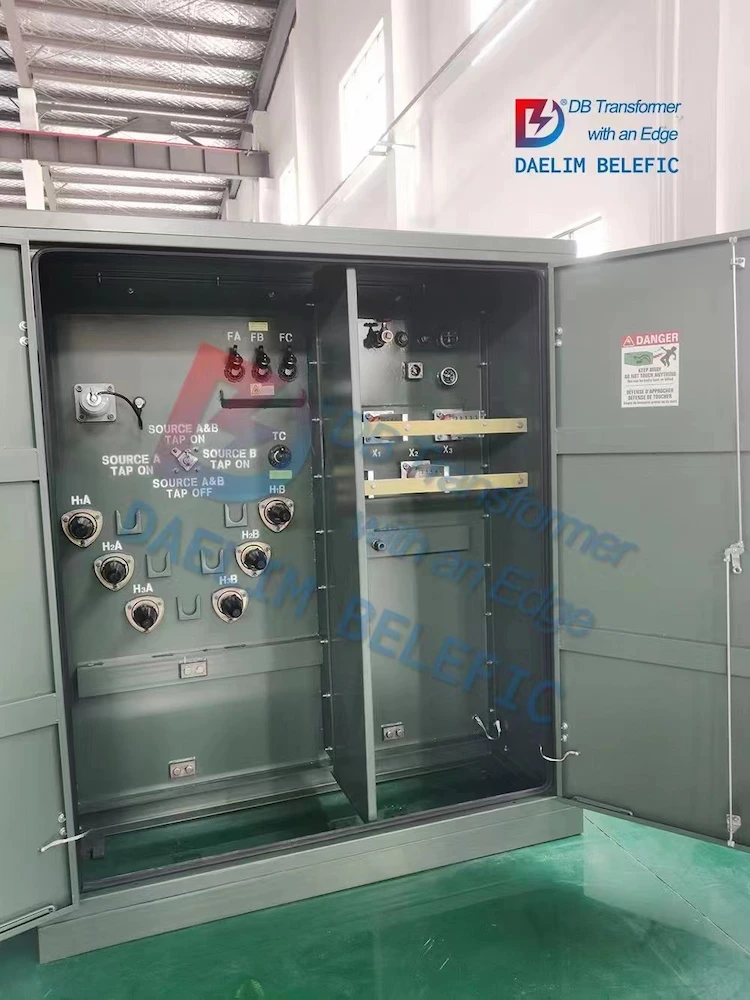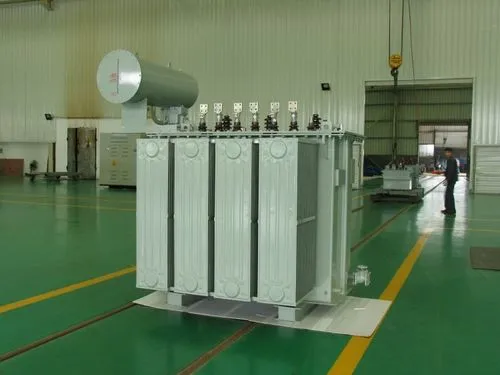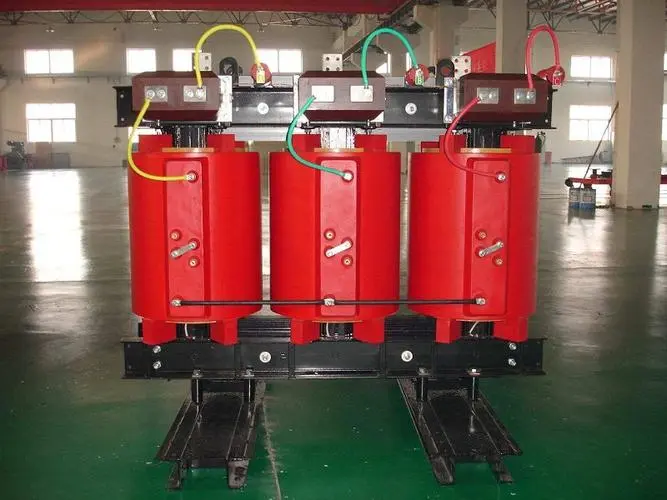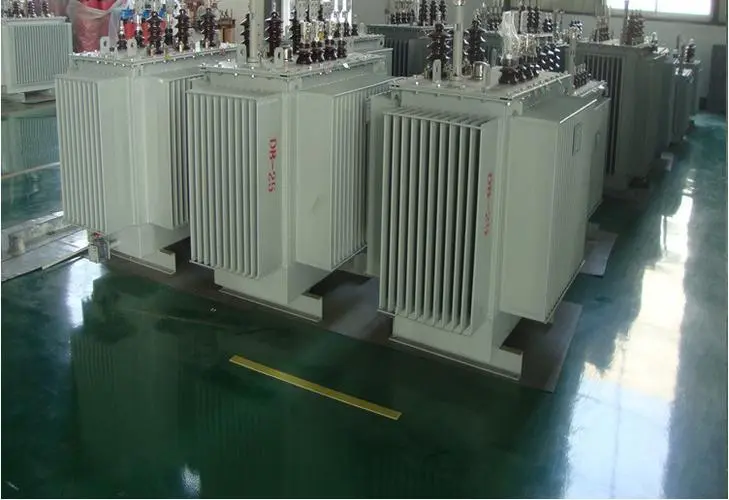
How to Choose Pad Mounted Transformer?
Table of Contents Selecting the right pad-mounted transformer requires careful consideration of several critical
ELECTRIC, WITH AN EDGE
1600 kva transformers are widely used today. People usually use it in power distribution systems. There are many types of 1600kva transformer. But when you purchase a 1600kva transformer, will you have the following doubts.
How to confirm the quality of 1600kva transformer?
What are the main parameters of the 1600kva transformer?
What is the meaning of these parameters?
…
This article will discuss the above issues for you in detail. Keep Reading.
Daelim is a factory specialized in designing and producing transformers. Daelim has obtained CSA, IEEE, AS 60076 and many other certifications.
If you need to purchase a 1600kva transformer, daelim will provide you with a professional solution within 3 days of your request.
Help you save purchasing time and improve work efficiency.


To purchase a transformer 1600kva, you need to specify a technical specification and confirm the following data.
The type of transformer you need to source for 1600kva.
According to the technical parameters given in your technical assignment book of 1600kva transformer, it is mainly given capacity S, input voltage U1, output voltage U2, connection group label, impedance voltage Uk, no-load loss P0, load loss Pk, no-load current I0 and Other technical requirements, obtain the basic parameters of transformer products in terms of electricity, heat, and magnetism.
1600kva transformer refers to a transformer with a rated capacity of 1600kva, a device made according to the self-inductance and mutual inductance phenomena in the principle of electromagnetic induction.
1600kva refers to the rated no-load voltage of the transformer, and the product of the corresponding phase coefficient and the rated current is 1600kva.
transformers 1600kva are usually three-phase transformers, which can be divided into dry-type transformers and oil-immersed transformers. Usually used in densely populated or commercial areas, such as docks, hospitals, schools, etc.

The types of 1600 kva transformers on the market can be mainly divided into 1600 kva dry-type transformers and oil-immersed transformers.
Among them, dry-type transformers can be divided into three types: open type, closed type and pouring type.
At present, the 1600 kva transformers on the market are mainly cast-type dry-type transformers, which use epoxy resin as the main insulating material, with simple structure and small size, and are mainly used in shopping malls and other places.
1600 kva oil-immersed transformers are mainly three-phase transformers. Its winding mode adopts double winding mode. Adopt iron core structure layout.

The 1600kva power transformer uses concentric windings of circular section. The winding of circular section is very stable under the action of tensile force and compressive force, the wire length is the smallest under the condition of a given effective section of the iron core, the operation is reliable, and the manufacture is simple.
Concentric windings are cylindrical. The heights of the high-voltage and low-voltage windings are approximately the same. The high-voltage winding is arranged outside, and the low-voltage winding is directly sleeved on the core column.
1600kva distribution transformer windings usually take the following forms: single-segment layer type, segmented layer type, spiral type, continuous type, foil type.
The continuous winding is generally used as the outer winding of the 1600kva distribution transformer and has the following characteristics:
(1) The winding is composed of several round pie-shaped wire pie. The bus pie is generally between 30 and 100, and it is an even number. The number of parallel wires is generally not more than 4, and the maximum is 6.
(2) Under normal circumstances, the odd-numbered cakes are called “reverse cakes (or reverse segments)” from the winding end, and the wires are wound from the outside to the inside. Even-numbered cakes are “positive cakes (positive segment)”, and the wires are wound from the inside to the outside. A reverse pie and an adjacent positive pie form a unit, called a “double pie unit”. The oil passages inside the unit are called “outward oil passages”, and the oil passages outside the unit are called “inward oil passages”; in special cases (such as the outgoing wires of the windings are drawn from the inner diameter side), count from the winding end. , odd-numbered pie is positive pie, even-numbered pie is negative pie. A positive cake and adjacent reverse cakes form a unit, the oil passages in the unit are called “inward oil passages”, and the oil passages between the units are called “outward oil passages”.
(3) The continuous winding must be transposed, and the radial direction of the wire cake at the transposed position is higher than that of the normal part. To prevent increasing the radial size of the winding, fractional turns are used. The numerator value is generally the total number of winding struts minus 1.
(4) The line segments of the continuous winding are all wound on the struts to form vertical oil passages on the inner surface of the winding, and spacers are worn on the struts to form the oil passages between segments. Each turn of the winding can consist of one or several parallel wires. The coil of this structure can reduce the eddy current loss of the coil and facilitate winding.
(5) The continuous winding end support surface is large, which is stable to the axial force during short circuit, and has a large heat dissipation surface at the same time.
(6) The capacitance of the continuous winding to ground is much larger than the longitudinal capacitance of the winding, so under the lightning overvoltage, the potential gradient between the line segments at the inlet end of the winding is large.
In view of the above characteristics, continuous coils are widely used in 1600kva transformers in terms of voltage and capacity.
The main parameters of the 1600kva transformer include rated voltage, rated current, rated capacity, temperature rise, rated frequency, no-load loss, short-circuit loss, and connection group.
The rated voltage refers to the voltage value specified by considering the dielectric strength of the 1600kva transformer to allow heating, and the unit is V. The rated voltage of the secondary side refers to the voltage value at both ends of the secondary side after the rated voltage is added to the primary side when the transformer is fully loaded.
The rated voltage of the 1600kva three-phase transformer refers to the line voltage.
According to the specified full load current value of the 1600kva transformer under the allowable temperature rise condition, the unit is A.
The rated current of the 1600kva three-phase transformer refers to the line current.
According to the specified full load current value of the 1600kva transformer under the allowable temperature rise condition, the unit is A.
The rated current of the 1600kva three-phase transformer refers to the line current.
The maximum power transmitted by a 1600kva transformer is the product of the rated voltage and rated current of the secondary side of the transformer, and the unit is V • A.
The temperature rise is the value that the 1600kva transformer is allowed to exceed the ambient temperature under rated conditions, depending on the level of the transformer insulation material.
The rated frequency refers to the power frequency at which the 1600kva transformer can operate normally under the rated voltage, rated current and rated power. The rated frequency of commonly used power transformers is 50HZ. In some countries in the world, the power frequency is set to 60Hz°
No-load loss is the loss of active power when the transformer is in no-load state, that is, the loss of the transformer when the rated voltage is applied to the primary side of the transformer and the secondary side is open.
The copper loss of the transformer at no-load is very small, mainly caused by the hysteresis loss and eddy current loss of the iron core, so the no-load loss is also called iron loss, and its loss is mainly converted into heat energy.
The short-circuit loss is the loss of the transformer when the 1600 kva transformer is short-circuited, that is, the secondary side of the transformer winding is short-circuited, and the rated current is passed through the primary side winding.
Since this loss is mainly the active loss consumed on the winding resistance, most of which is converted into heat energy, so it is also called copper loss.
Indicates the connection mode of each winding of the 1600 kva transformer and the phase difference between the voltages of the primary and secondary side windings.

Transformer no-load current I0 includes active component I0y and reactive component I0w.
The active component is generated due to iron loss, and the reactive component includes the excitation current and the joint excitation current.
The active component of the no-load current depends on the no-load losses of the transformer.
The load loss of the transformer 1600kva is mainly the resistance loss of the winding wire, the additional loss of the winding, and the loss of the steel structure. stray losses, etc.
There are five commonly used transformers at present, namely Y, ynO; Y, dll; YN, dll; YN, yO and Y, yO, the first three are commonly used.
The secondary winding of the Y, ynO connection method can lead out the neutral wire to become a three-phase four-wire system, and can be used as a distribution transformer with both lighting load and power load.
Y and dll are used in lines with secondary side voltage exceeding 400V. At this time, one side is connected in a delta shape, which is beneficial to operation.
YN, dll is mainly used in high-voltage transmission lines, so that the high-voltage side of the power system may be grounded.
1600 kva transformer wiring method You can choose one of the above wiring methods based on the data provided by the manufacturer. At the same time, the transformer factory will also give you specific suggestions.
The specifications of a trafo 1600 kVA transformer are crucial in understanding its capacity, design, and suitability for various applications. This section will explore the critical specifications, including the 1600 kVA transformer dimensions, another important Lsi keyword.
Dimensions vary based on the design and features:
| Height | Width | Depth | Weight |
|---|---|---|---|
| Varies | Varies | Varies | Varies |
The 1600 kVA transformer finds usage in various industrial and commercial applications. Some of these include:
Understanding the specifications of a trafo 1600 kVA transformer is essential in selecting the right product for your needs. It includes understanding the 1600 kVA transformer dimensions, efficiency, cooling method, and compliance with necessary standards.
Determining the cost of a 1600 kVA transformer is vital for budget planning and decision-making. Various factors influence the price:
| Type | Features | Price Range |
|---|---|---|
| Standard | Basic design | $X – $Y |
| Customized | Special features | $X1 – $Y1 |
Here are a few places to consider purchasing a 1600 kVA transformer:
The cost of a 1600 kVA transformer varies based on several factors, including type, features, location, and supplier. Researching and understanding these factors can lead to a cost-effective purchase that meets your specific needs.
Understanding the dimensions of a 1600 kVA transformer is essential for installation, transportation, and integration within a specific space. This section covers the various aspects of 1600 kVA transformer dimensions, a relevant Lsi keyword.
The standard dimensions depend on the type, cooling method, and other specifications:
| Type | Height | Width | Depth |
|---|---|---|---|
| Oil-cooled | X ft | Y ft | Z ft |
| Air-cooled | A ft | B ft | C ft |
The dimensions of a 1600 kVA transformer are vital for planning, installation, and integration. Understanding the standard dimensions, weight considerations, space requirements, and customization options ensures a smooth implementation process.
Converting 1600 kVA to amps is a common question that arises when working with transformers. Understanding this conversion
helps in system design and compliance with safety standards. This section includes the conversion process, which relates to the Lsi keyword "kva to amps."
The basic formula for converting kVA to amps is:
[ \text{Amps} = \frac{\text{kVA} \times 1000}{\text{Voltage}} ]
For a single-phase transformer, use the following formula:
[ \text{Amps} = \frac{1600 \times 1000}{\text{Voltage}} ]
For a three-phase transformer, use this formula:
[ \text{Amps} = \frac{1600 \times 1000}{\sqrt{3} \times \text{Voltage}} ]
Here are some example conversions for different voltages:
| Voltage (V) | Single-Phase Amps | Three-Phase Amps |
|---|---|---|
| 220 | 7273 A | 4200 A |
| 400 | 4000 A | 2310 A |
Converting 1600 kVA to amps is a straightforward process using the provided formulas for single and three-phase systems. This conversion is crucial in various aspects of system design, planning, and compliance with safety standards.
The applications of a 1.6mva transformer are vast and crucial in numerous industrial and commercial settings. This section will explore the various applications, emphasizing the Lsi keyword "1.6mva transformer."
The applications of a 1.6mva transformer are diverse and essential in various sectors, including industrial, commercial, healthcare, and renewable energy. Understanding these applications assists in selecting the right transformer for specific needs.
Knowing where to buy a 1600 kVA transformer is crucial for purchasing a unit that meets your specific requirements. This section outlines various options, reflecting the Lsi keyword "1600 kva transformer price."
Knowing where to buy a 1600 kVA transformer is vital in ensuring the right product, price, and support. Consider various options, including manufacturers, distributors, online platforms, and local suppliers, to find the best solution for your needs.
**
Safety considerations for a 1600 kVA transformer** are paramount to ensure efficient operation and minimize risks. This section provides an overview of safety considerations, embracing the Lsi keyword "1600 kva transformer dimensions."
Safety considerations for a 1600 kVA transformer must encompass various aspects, including physical dimensions, cooling systems, clearances, grounding, fire safety, and personal safety. Proper planning and adherence to standards are vital to ensure the safe operation of the transformer.
Maintenance of a 1600 kVA transformer is essential for its long-term performance and safety. This section details the best practices, considering the Lsi keyword "1600 kva transformer specifications."
Maintenance of a 1600 kVA transformer requires regular inspections, testing, cooling system maintenance, and adherence to manufacturer's recommendations. Following best practices ensures the transformer's longevity, efficiency, and safety.
Installation of a 1600 kVA transformer is a complex process that requires careful planning and execution. This section outlines the installation process, emphasizing the Lsi keyword "1600 kva transformer price."
Installation of a 1600 kVA transformer is a multi-step process involving site selection, foundation building, electrical connections, cooling system installation, grounding, and safety measures. Proper planning, professional execution, and adherence to standards are crucial for successful installation.
Understanding the different types of 1600 kVA transformers is vital for selecting the appropriate unit for a specific application. This section explores various types, including the Lsi keyword "1.6mva transformer."
The different types of 1600 kVA transformers include oil-immersed, dry-type, pad-mounted, pole-mounted, step-up/down, single-phase, three-phase, and special-purpose units. Understanding these types assists in selecting the appropriate transformer for specific needs.
1600 kVA transformers, also known as Transfo 1600 kVA or 1.6mva transformers, are vital components in modern power distribution systems. From specifications and maintenance to applications and safety, understanding these transformers is crucial for engineers, technicians, and decision-makers in various sectors.
The comprehensive guide above provides essential insights into these transformers, exploring key aspects like conversion from kVA to amps, applications, purchasing options, safety considerations, maintenance, installation, and types. With proper selection, installation, and maintenance, these transformers offer reliable and efficient performance that meets the growing demands of today's electrical infrastructure. If you have any questions or need further information, consider exploring the various resources and products offered by [Daelim
Electric](https://daelim-electric.com/).
Download Resource

Table of Contents Selecting the right pad-mounted transformer requires careful consideration of several critical

The primary function of the pad mounted transformer is to serve as a critical distribution

A pad mounted transformer operates through electromagnetic induction, serving as a crucial distribution component that
After filling in the contact information, you can download the PDF.